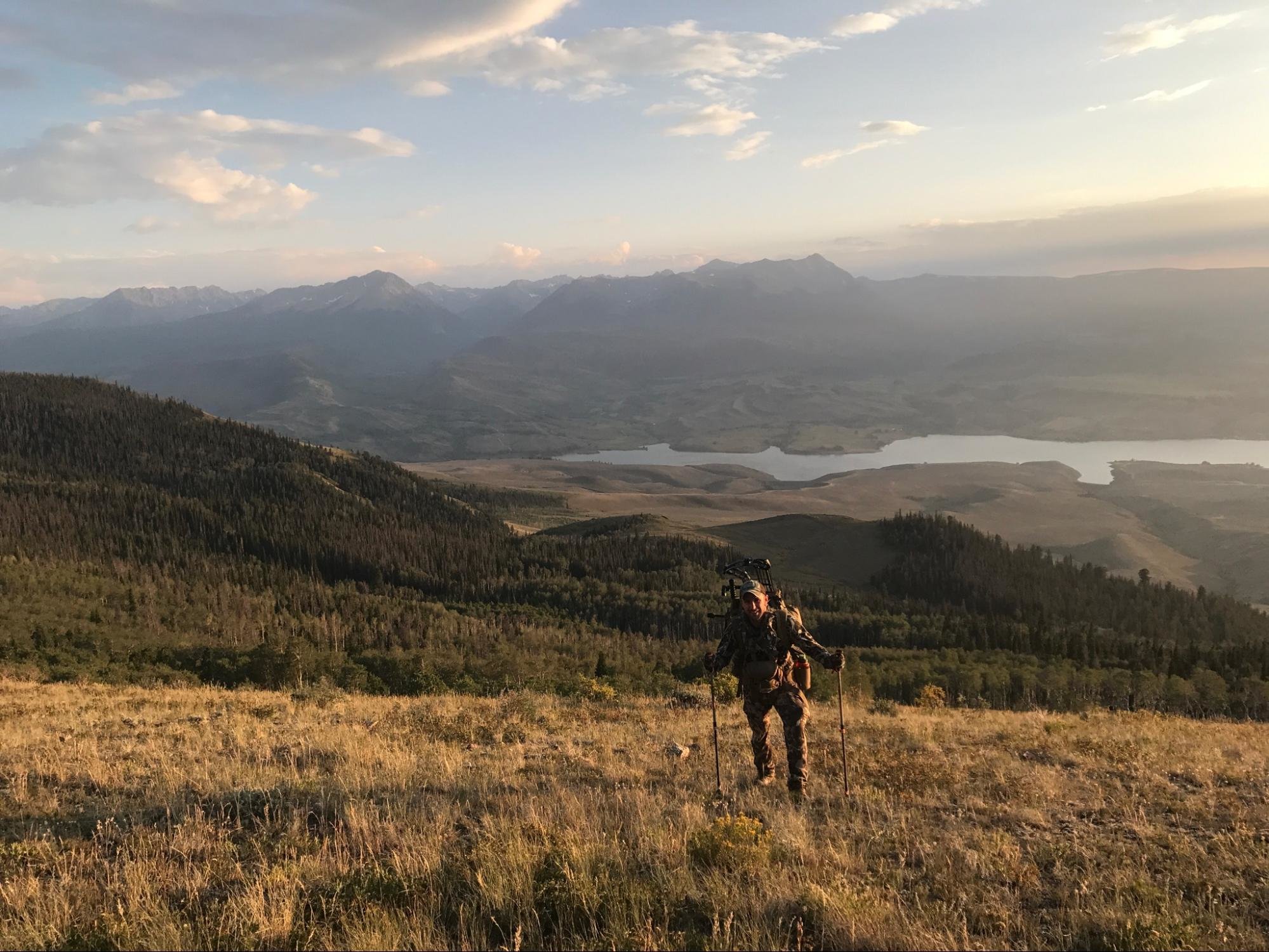
Photo courtesy of Michael Herne.
There’s no doubt that hunting elk in the Rocky Mountain West is a physical activity. If you don’t live in a state like Colorado, where the average elevation is 6,800 feet above sea level, then you are already going into the season at a disadvantage. One of the most common killers for elk hunting hopefuls is the elevation and rugged terrain elk live in.
Just about every experienced elk hunter will agree that the farther you get from roads and subsequent hunting pressure, the better the quality of your hunt. Physical fitness directly relates to mental fitness. The fitter you are, the more likely you’ll be able to stay on the mountain longer.
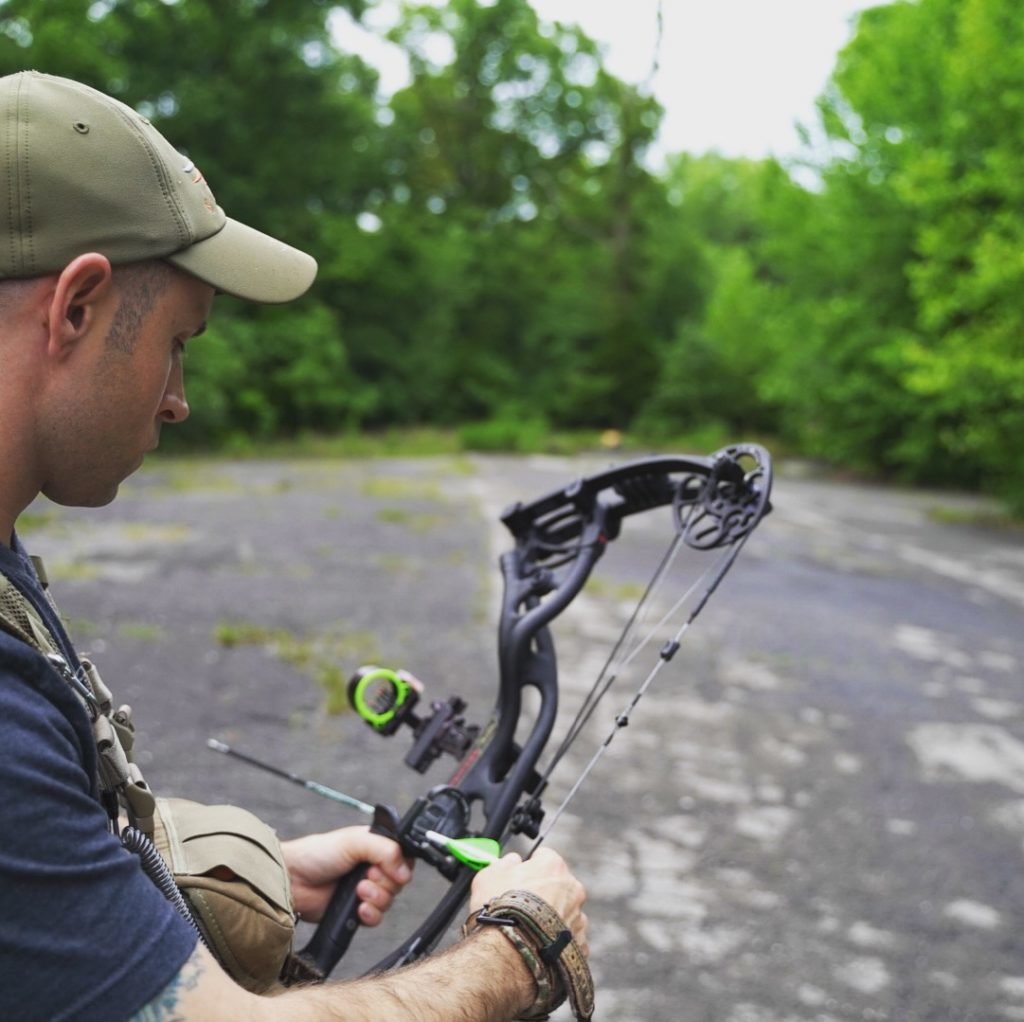
Weighted Step-ups
If you’re hunting elk, moving uphill under load is almost inevitable. Aside from loading a pack and humping up and down hills, one of the best exercises for training your legs is weighted step-ups. I do weighted step-ups one to three times a week starting about two months prior to my elk hunting trip and rotating between these three workouts:
- 60 seconds on/30 seconds rest for a total of 20 to 30 reps per interval for 30 minutes
- complete 600 to 800 step-ups
- as many as possible in 30 minutes
This exercise can be easily done in your garage or home. For equipment, you’ll need a box or platform that is 16 inches tall, your hunting pack, and a tally counter (losing count is not fun). I highly recommend wearing your hunting boots while doing this as it will also help you locate trouble spots or potential blister locations, if there are any, that are caused by your boots.
Last season while I was following this workout regimen, my run time vastly improved, and I attribute that to the weighted step-ups.
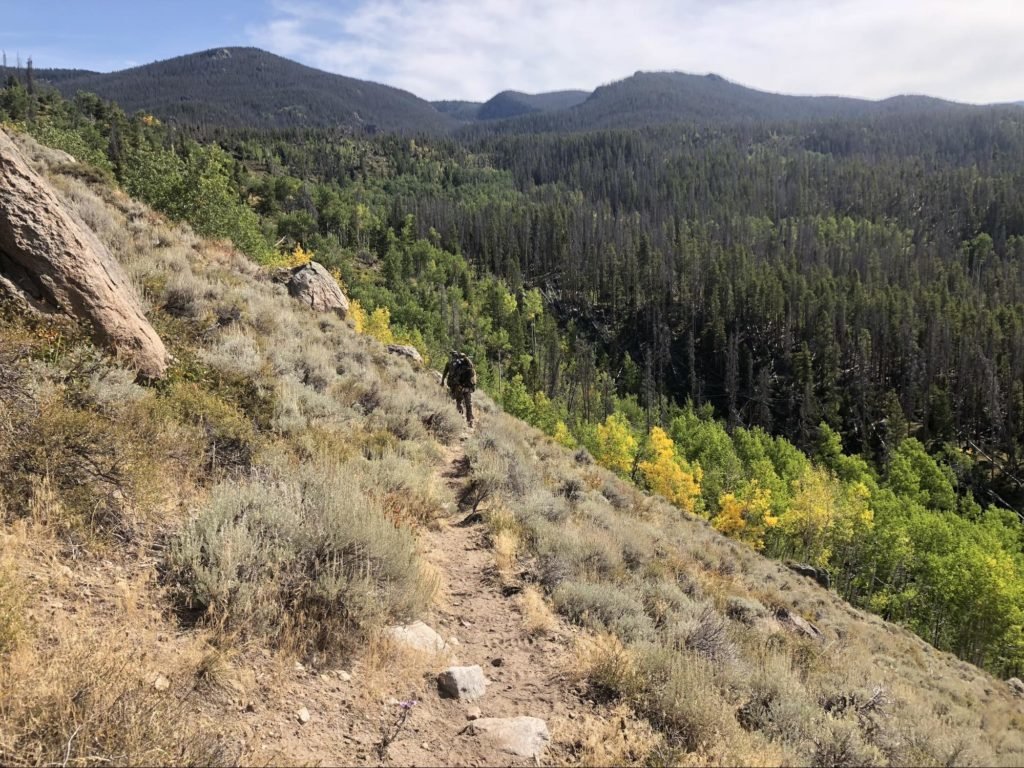
Running
Cardiovascular endurance can make you or break you out West. From significant elevation gain to the rugged terrain, you need to train your motor (lungs and heart) for the rigors of bow hunting in the mountains. If your fitness level isn’t high, start slowly and work your way up. I generally run two to three times a week in the spring and summer months, increasing my mileage from 1 to 3 miles to 5 to 8 miles as the season nears.
When running, you’re not trying to qualify for the Boston Marathon. We want to get our lungs and heart used to working a little harder for prolonged periods of time. On longer runs, I shoot for an 8- to 9-minute mile pace; on shorter runs, the goal is sub-7-minute miles.
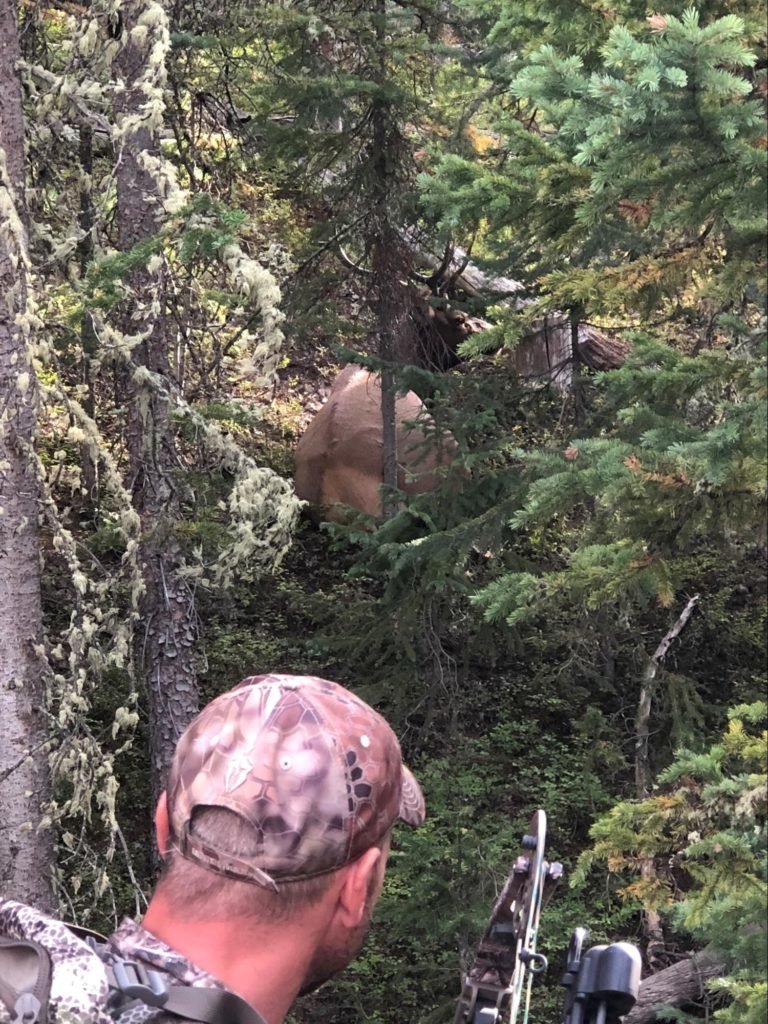
Ruck Marching
In the military, we call pack hikes “ruck marching” or “rucking.” There are many practical benefits to putting some miles in with a pack on your back. First of all, it allows you to get intimate with your pack and figure out its fit and function. If the first time you’re carrying over 70 pounds in your pack is after you have an animal on the ground, you may be in for a rude awakening.
The second benefit is that you can figure out where and how to pack your load, or the weight. As a general rule, the weight in your pack should be centered, evenly balanced, and toward the top — in the middle of your shoulder blades is the best.
The physical benefit is that you’re getting your body used to what you’ll be doing in the field. I generally ruck two to three times a week, varying the weight of the pack and the speed of the walk. One day I will pack lightweight (40 pounds) and walk a brisk 15-minute mile pace; another day I will pack heavyweight (70 pounds) and walk a slower pace. As with running, I increase mileage over time, starting with 2- to 3-mile hikes and working up to 6 to 8 miles.
For the heavyweight/slow-pace days, I don’t target a specific pace. The goal is something I refer to as Time Under Ruck (TUR) — this is purely to get the body used to the inherent suck that is packing out an elk. This is another great time to test out your hunting footwear.
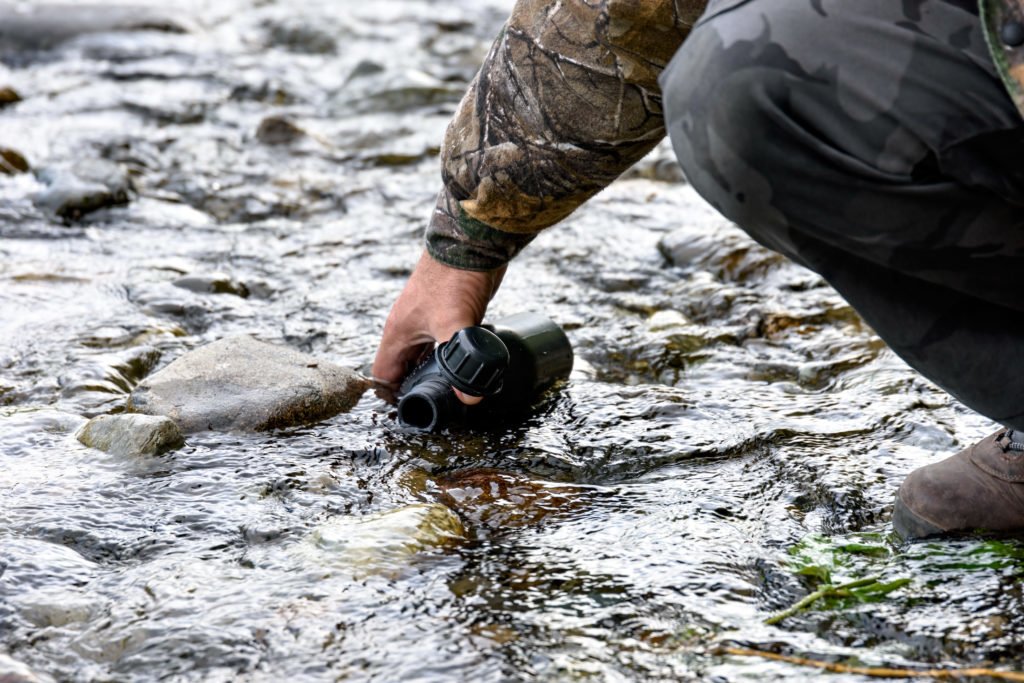
Hydration
About a week before my trip, I get serious about hydration, taking in 100 to 130 ounces of water a day minimum. That translates to a little more than three Nalgene bottles. Other than coffee, I cut out all extracurricular beverages — including alcohol and energy drinks. On my two-day drive to the Rocky Mountain West, I continue this trend.
While I’m in the mountains, water availability and physical exertion play a major role in my hydration level. I bring electrolyte drink mixes in addition to my water supply and usually drink one a day. Hydration at elevation is extremely important for performance and should not be taken lightly.
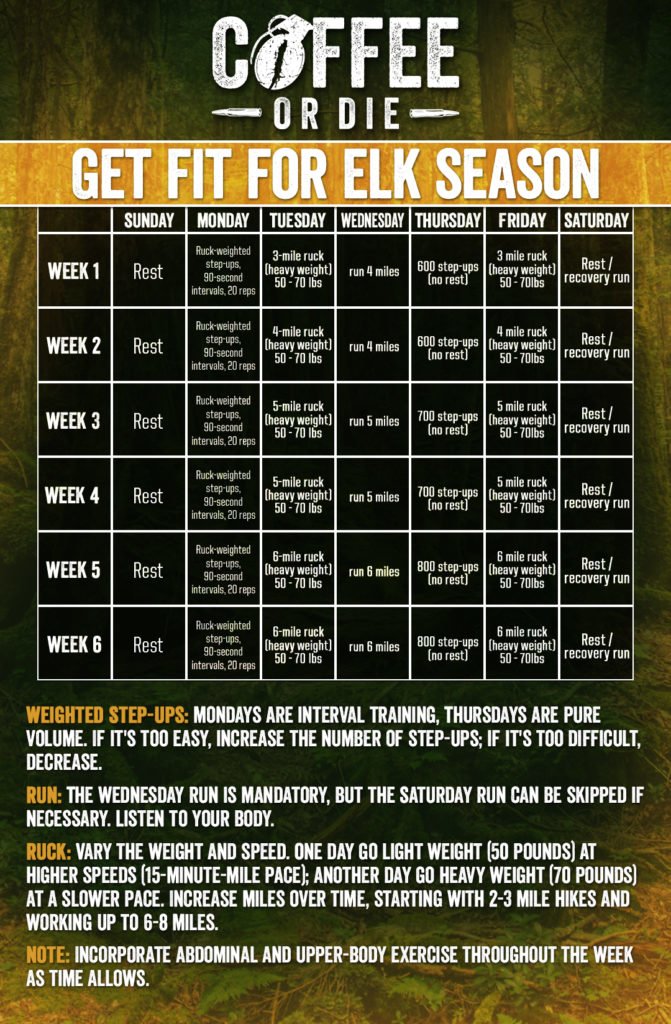
Can you kill an elk without physical preparation? It’s absolutely doable — however, if you’re coming from out of state, you’re going to be competing with resident hunters who are, at a minimum, better acclimated and have a better understanding of the terrain and game they seek.
One major benefit of training to head West is hardening the mind. Tagging an elk with a bow often comes down to who can stay in the field longer and continue to grind. Hiking up and down mountains with a bow and a pack on can be painful and unpleasant. However, if you are fit and have conditioned yourself for it, you’ll be in a better mood and state of mind while embracing the suck, thus you’ll be able to stay out longer and go farther.
When I’m preparing to head West for an archery hunt, I want to give myself every possible advantage and be prepared to do what it takes to put an elk on the ground. Will you be ready this fall?
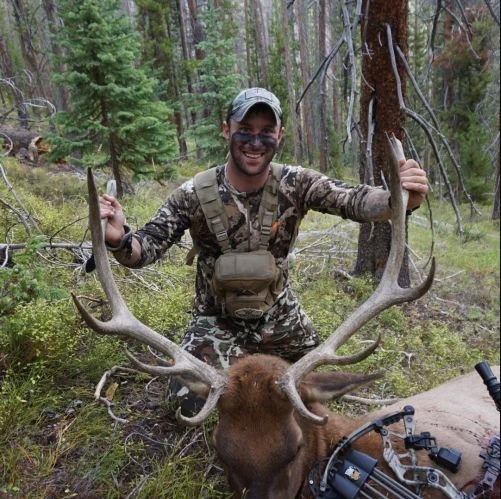
Michael Herne is a contributing writer for Coffee or Die. He is an Airborne Ranger currently serving on active duty (13 years) in the U.S. Army, with a total of 33 months deployed to Afghanistan. His passion lies in backpack hunting and fly fishing. In the time not consumed by his military obligations, you’ll find Michael somewhere in the outdoors with a fly rod or bow in hand and a pack on his back. His hunting exploits continue to take him to beautiful and interesting places, from the hills of Kentucky to the peaks of the Rocky Mountain West. He has been hosted on the podcasts Becoming a Bowhunter and East to West Hunting.
BRCC and Bad Moon Print Press team up for an exclusive, limited-edition T-shirt design!
BRCC partners with Team Room Design for an exclusive T-shirt release!
Thirty Seconds Out has partnered with BRCC for an exclusive shirt design invoking the God of Winter.
Lucas O'Hara of Grizzly Forge has teamed up with BRCC for a badass, exclusive Shirt Club T-shirt design featuring his most popular knife and tiomahawk.
Coffee or Die sits down with one of the graphic designers behind Black Rifle Coffee's signature look and vibe.
Biden will award the Medal of Honor to a Vietnam War Army helicopter pilot who risked his life to save a reconnaissance team from almost certain death.
Ever wonder how much Jack Mandaville would f*ck sh*t up if he went back in time? The American Revolution didn't even see him coming.
A nearly 200-year-old West Point time capsule that at first appeared to yield little more than dust contains hidden treasure, the US Military Academy said.












